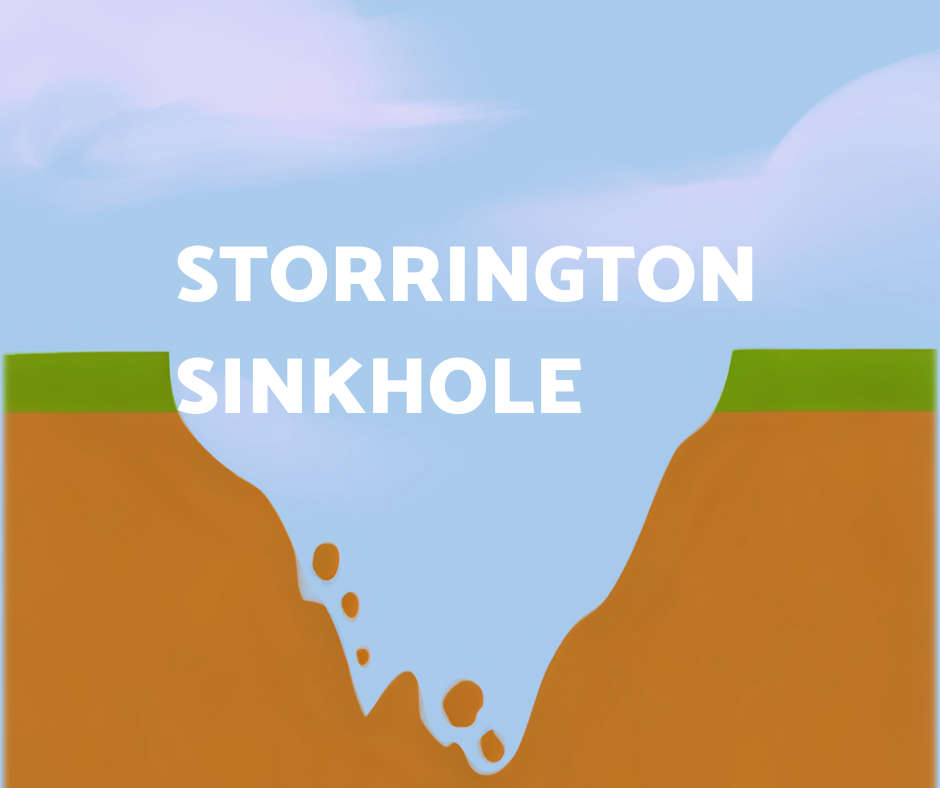
A large sinkhole in Storrington remains unrepaired nine weeks after it first appeared, sparking frustration among local businesses and residents.
The hole initially surfaced on Church Street in October as a tennis ball-sized opening but has since grown significantly, now spanning the size of a small car.
The sinkhole's expansion has caused notable disruption to local businesses, many of which rely on the street for customer access and deliveries. Business owners have reported a drop in foot traffic, with some expressing concern about the long-term impact on their trade. Local residents have also voiced their frustrations, citing the inconvenience caused by road closures and diversions.
West Sussex County Council says while repairs are complex, they recognise the impact on residents and businesses.
They also said that efforts are underway to resolve the issue as soon as possible.
HOW DO SINKHOLES OCCUR?
This process can happen naturally or as a result of human activity. Here’s a breakdown of how sinkholes form:
- Natural Causes:
- Water Erosion: The most common cause of sinkholes is the gradual erosion of underground rock, usually limestone, gypsum, or other soluble materials. As rainwater seeps into the ground, it becomes slightly acidic due to the absorption of carbon dioxide. This acidic water dissolves the rock, creating underground voids or cavities. Over time, as these voids grow larger, the surface layer can no longer be supported, causing it to collapse and form a sinkhole.
- Changes in Water Table: Sudden drops in the underground water level can also trigger sinkholes. When groundwater recedes due to drought or excessive water pumping, the supporting pressure on underground cavities is reduced, making them more prone to collapse.
- Heavy Rainfall or Flooding: Excessive rainfall or flooding can lead to the rapid erosion of underground rock, destabilizing the surface above and leading to sinkhole formation.
- Human-Induced Causes:
- Construction and Drilling: Human activities such as mining, drilling, or construction can weaken the underground structure and create voids that may collapse into sinkholes.
- Water Main Breaks and Drainage Failures: When underground water pipes burst or private drainage systems fail, large amounts of water can flow into the soil, washing away supporting materials and causing the surface to sink.
- Groundwater Pumping: Excessive extraction of groundwater for agriculture, industrial use, or human consumption can deplete underground water reserves, leading to the collapse of voids previously supported by water pressure.
- Signs of an Impending Sinkhole:
- Cracks in walls, floors, or pavement
- Depressions or sagging areas on the ground surface
- Sudden loss of water in wells
- Doors and windows that no longer close properly due to shifts in the foundation
Sinkholes can range from small depressions to massive craters, as seen in Storrington, where a tennis ball-sized hole grew to the size of a small car. Understanding the causes and early warning signs can help prevent serious damage and loss of property.

 A man has been found not guilty of murder after a death at a pub in Chichester
A man has been found not guilty of murder after a death at a pub in Chichester
 Woman assaulted by two men in a Brighton road
Woman assaulted by two men in a Brighton road
 There’s a recruitment drive in West Sussex to hire full-time firefighters.
There’s a recruitment drive in West Sussex to hire full-time firefighters.
 Winter Weather Advisory: Yellow Snow Warning Issued for Southern England
Winter Weather Advisory: Yellow Snow Warning Issued for Southern England
 Appeal following stabbing in Crawley
Appeal following stabbing in Crawley
 Campaign launches in West Sussex to get people to watch what they drink
Campaign launches in West Sussex to get people to watch what they drink
 Appeal to identify two men in connection with arson in Wick
Appeal to identify two men in connection with arson in Wick
 Early cancer detection rates soar in Sussex
Early cancer detection rates soar in Sussex
 Consultation into cutting pupil numbers at two West Sussex schools
Consultation into cutting pupil numbers at two West Sussex schools
 Hit and run in Hambrook near Chichester
Hit and run in Hambrook near Chichester






